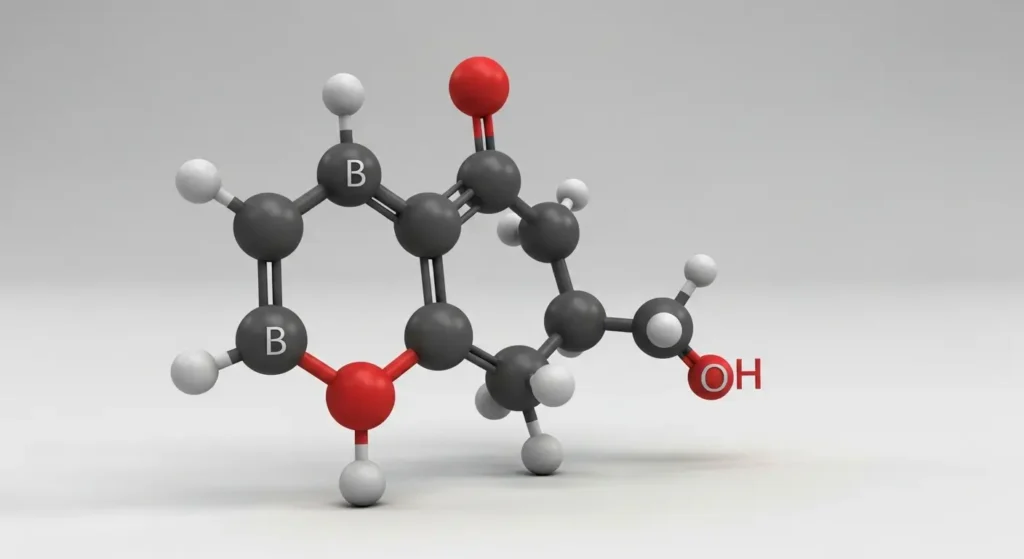Are you frustrated with thinning hair and exploring natural solutions like beta-sitosterol and hair loss? Beta-sitosterol is a plant-derived sterol that may reduce DHT levels, calm scalp inflammation, and support hair regrowth.
In this article, you’ll learn how it works, what science says, safe usage tips, and expert perspectives. Backed by medical insights and practical advice, this guide helps you decide whether beta-sitosterol is a worthwhile addition to your hair health journey.
What Is Beta-Sitosterol?

Natural Occurrence & Dietary Sources
Beta-sitosterol is a type of plant sterol (phytosterol) that occurs naturally in:
- Nuts and seeds (almonds, peanuts, sunflower seeds)
- Vegetable oils (canola, corn, olive, avocado oil)
- Fruits and vegetables (avocados, berries, soybeans)
It has long been used for cardiovascular and prostate health. More recently, researchers are investigating its potential role in hair growth and hair loss management.
Biological Profile & Mechanism Basics
Beta-sitosterol resembles cholesterol in structure, but it competes with cholesterol absorption in the gut, which may reduce overall cholesterol levels. Importantly for hair loss, it is believed to act as a natural 5-alpha reductase inhibitor, the same enzyme targeted by finasteride, a prescription hair loss medication.
How Beta-Sitosterol Might Influence Hair Loss
DHT Reduction & 5α-Reductase Inhibition
Hair loss, particularly androgenetic alopecia (male and female pattern baldness), is largely linked to dihydrotestosterone (DHT). This hormone shortens the hair growth cycle and miniaturizes follicles.
- Beta-sitosterol may inhibit 5-alpha reductase, the enzyme that converts testosterone into DHT.
- By lowering scalp DHT, it may help slow hair thinning and encourage thicker regrowth.
Anti-Inflammatory and Scalp Health Support
Beyond DHT, chronic inflammation plays a role in scalp conditions and follicle weakening. Beta-sitosterol demonstrates anti-inflammatory and antioxidant properties, which could improve scalp health and create a more favorable environment for hair regrowth.
Scientific Evidence: What Do Studies Say?
Animal Studies Using Microneedle or Nanocarrier Delivery
Preclinical research has explored innovative ways to deliver beta-sitosterol:
- Microneedle patches: These improved follicle penetration and promoted hair growth in animal models.
- Cubosome or nanocarrier systems: Helped beta-sitosterol reach deeper scalp layers, showing promising regrowth results in rats.
Human Trials & Combination Supplements
Limited small-scale studies suggest that oral supplements containing beta-sitosterol, often combined with saw palmetto, may improve hair density. For example:
- A pilot study in men showed positive effects on hair growth after 6 months of beta-sitosterol and saw palmetto supplementation.
- Some clinical trials reference benefits in benign prostatic hyperplasia (BPH) due to DHT inhibition, indirectly supporting its potential hair health role.
Limitations: Lack of Large-Scale Evidence
Despite encouraging early findings:
- Few human clinical trials exist, and most involve combination formulas, making it hard to isolate beta-sitosterol’s effect.
- No large, double-blind randomized controlled trials (RCTs) have confirmed its effectiveness as a stand-alone treatment for hair loss.
How to Use Beta-Sitosterol for Hair Care
Supplements vs. Topical Formulations
- Oral supplements: Available as capsules, often combined with other phytosterols or herbal extracts.
- Topical serums/shampoos: May include beta-sitosterol for direct scalp application.
Suggested Dosages & Duration
- Typical supplement range: 60–130 mg/day, often as part of a blend.
- Timeline: Visible effects, if any, may take 3–6 months of consistent use.
- Always consult a healthcare provider before starting supplements.
Combining with Other Natural DHT Blockers
For enhanced effect, beta-sitosterol is often paired with:
- Saw palmetto
- Pumpkin seed oil
- Green tea extract
These ingredients share similar anti-androgenic or anti-inflammatory properties.
Safety, Side Effects & Considerations
General Safety Profile
Beta-sitosterol is generally well tolerated but may cause:
- Mild digestive issues (nausea, diarrhea, constipation)
- Rare allergic reactions
Rare Conditions: Sitosterolemia Risks
People with sitosterolemia, a rare inherited condition, should avoid beta-sitosterol because their bodies absorb plant sterols excessively, leading to dangerous cholesterol buildup.
When to Consult a Healthcare Provider
You should seek medical advice before using beta-sitosterol if you:
- Take cholesterol-lowering drugs (e.g., statins)
- Are you pregnant or breastfeeding
- Are already on hormone-modulating medications

FAQs
Q1: What is the best form of beta-sitosterol for hair?
Capsules and combined formulations (e.g., with saw palmetto) are most common. Topical forms may help but lack strong research.
Q2: How long before I see results?
It may take 3–6 months of daily use, if at all, to notice changes. Patience and consistency are key.
Q3: Can beta-sitosterol be used with minoxidil or finasteride?
Yes, in most cases, it can be combined for a multi-therapy approach, but consult a doctor to avoid interactions.
Q4: Are there risks when combined with cholesterol-lowering meds?
Yes. Beta-sitosterol affects cholesterol metabolism, so always check with your physician before combining.
Next Steps: Combining Science & Self-Care
If you’re considering natural approaches, beta-sitosterol could be a supportive option. But remember:
- Evidence remains limited.
- Professional evaluation ensures safety and effectiveness.
- Combining proven therapies with lifestyle changes often yields the best results.
👉 Book a consultation with Dr. Rana Irfan in Islamabad to explore personalized solutions for your hair loss. Our team offers evidence-based care, whether you’re interested in medical therapies, supplements, or advanced procedures like.
Conclusion
Beta-sitosterol is a promising natural compound with potential benefits for hair loss by reducing DHT and improving scalp health. While early studies and anecdotal reports are encouraging, more robust human research is needed.
For now, it can serve as a complementary option alongside clinically proven treatments. With expert guidance, patience, and a holistic plan, you can take meaningful steps toward restoring your hair and confidence.
